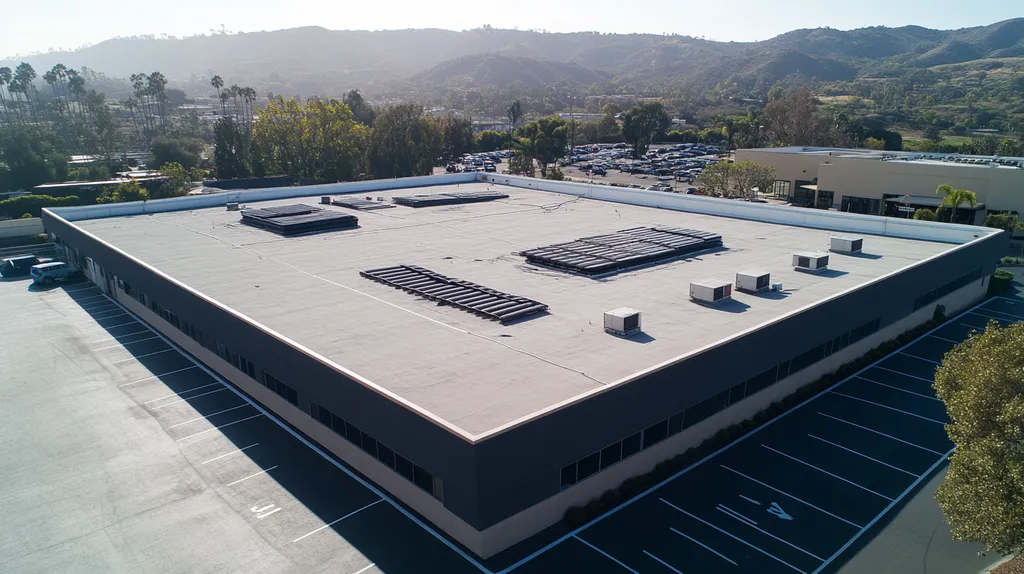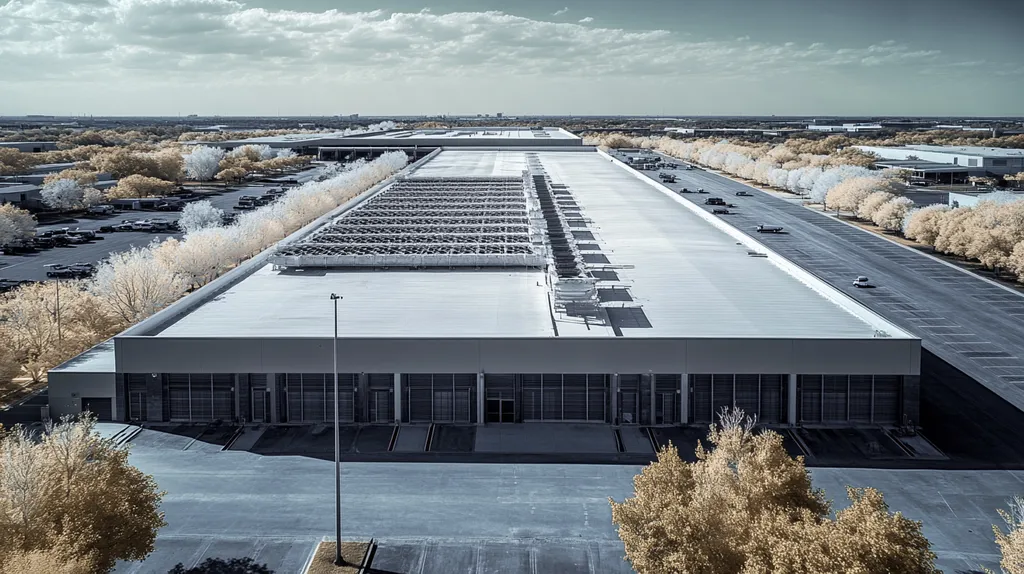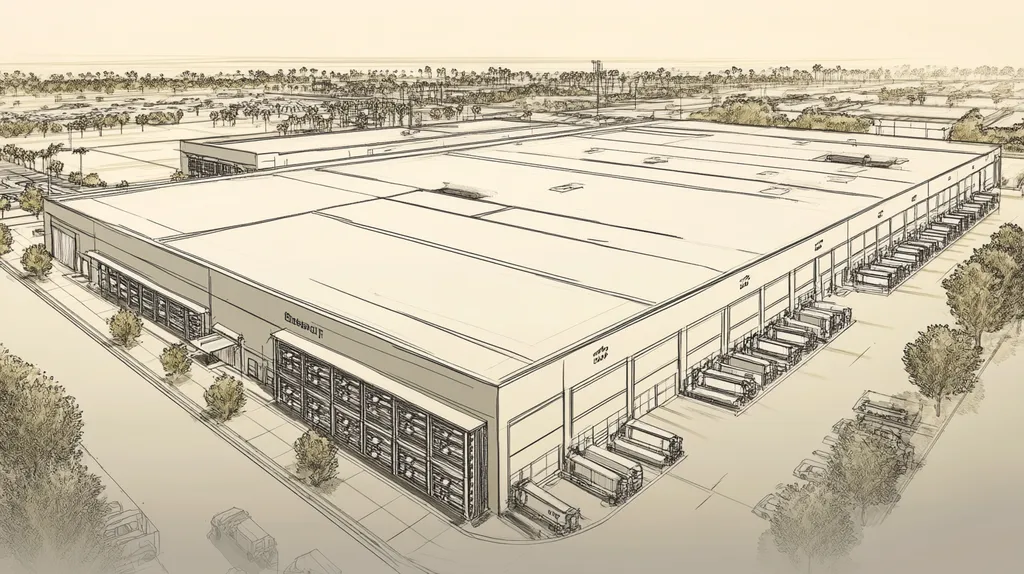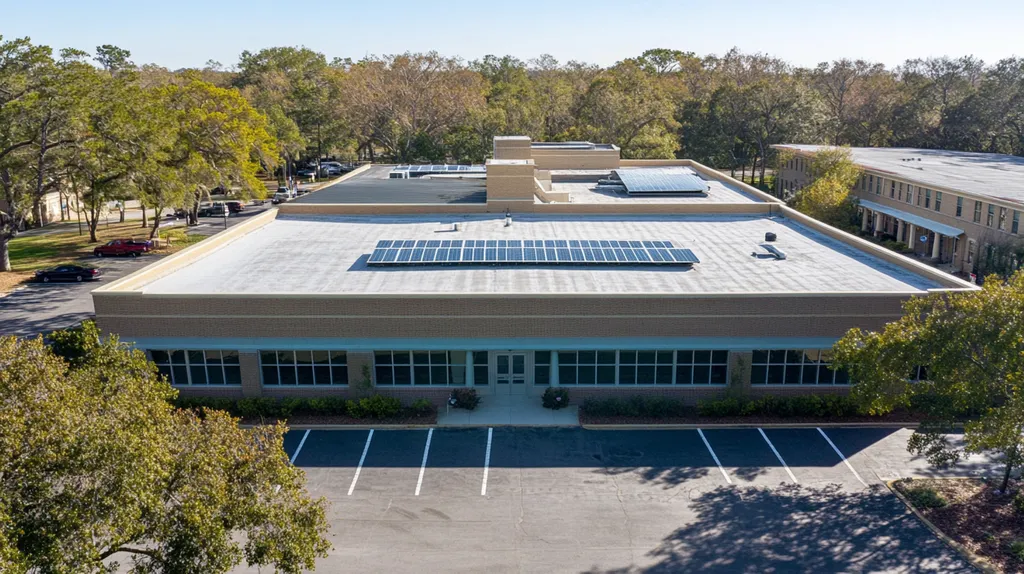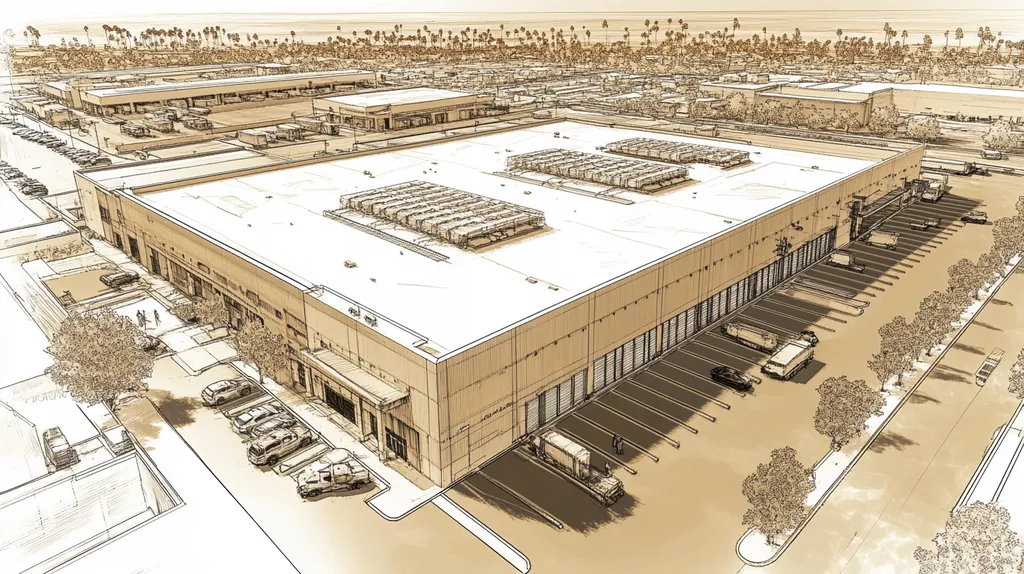In an era where industrial roof coating failures cost businesses over $2.3 billion annually, traditional timeline planning methods are becoming increasingly obsolete. The advent of smart sensors, predictive analytics, and automated project management tools has exposed critical flaws in conventional approaches.
From inadequate weather monitoring to poor coordination between stakeholders, these planning deficiencies lead to costly delays and premature coating failures.
This analysis examines how emerging technologies are revolutionizing industrial roof coating timelines while revealing why established methods continue to fall short of modern facility needs.
SECTION 1: CURRENT PRACTICES
The importance of effective roof coating planning is paramount in today’s industrial landscape. Alarmingly, more than 30% of roofs fail prematurely, primarily due to inadequate maintenance and outdated application techniques. These eye-opening statistics call for property owners and facility managers to reevaluate their conventional methods. This section delves into the prevalent practices within industrial roof coating planning, pinpointing critical areas that require enhancement for improved long-term results.
Initial Consultation and Assessment
The journey toward roof resilience begins with an initial consultation, often dominated by surface assessments. While a visual inspection can flag obvious distress, it frequently misses hidden issues that lurk beneath. Relying solely on surface evaluations can lead to costly surprises down the road.
Many property owners may not be aware of hidden damages like moisture buildup or adhesion failures. A robust assessment should leverage techniques such as infrared scanning or other non-destructive testing methods to unearth problems before they escalate.
Neglecting comprehensive evaluation practices can result in misguided coating applications. Property owners risk investing in coatings while ignoring the underlying causes of their roofing woes.
Furthermore, thorough evaluations pave the way for customized solutions that can extend a roof’s lifespan. By committing to detailed inspections, stakeholders can make informed decisions that ultimately save them from expensive replacements.
Surface Preparation and Repairs
Surface preparation is a critical step that dramatically influences the longevity of roof coatings. Traditionally, a quick power wash or a simple primer application might suffice, but this can yield uneven surfaces that compromise adhesion.
Proper cleaning techniques are essential; removing debris, grease, and loose materials is non-negotiable. Without meticulous cleaning, contaminants may obstruct the bond between the coating and substrate, causing peeling or blistering down the line.
Addressing repairs in existing substrates is equally vital. Spotting and fixing cracks or weak areas should happen before any coating is applied. Ignoring this fundamental step risks nullifying the benefits of the new coating, leading to costly repairs in no time.
By adhering to best practices in surface preparation, property owners can ensure effective adhesion and performance of coatings. This strategic approach saves both time and resources, making it a win-win investment.
Coating Selection and Application
Selecting the proper coating material is crucial for safeguarding roofs from the elements. Yet, many property managers cling to outdated guidelines, often overlooking innovative advancements in coating technology. Such reliance can compromise their roofs’ performance.
An informed selection process requires a deep understanding of a roof’s unique needs, including climate and exposure conditions. For instance, properties in harsher environments may benefit significantly from reflective or elastomeric coatings that provide enhanced durability.
The application technique also holds immense weight. Improper techniques can lead to uneven surfaces, adversely affecting efficacy. Rigorously following manufacturers’ guidelines is essential for achieving the desired results.
Embracing contemporary technologies and practices in both selection and application can yield superior performance. Such a proactive approach not only extends a roof’s lifespan but also maximizes return on investment for facility owners.
SECTION 2: SYSTEMIC ISSUES
Industrial roof coating projects often hit snags that can result in costly delays and unforeseen expenses. Confusion stemming from poor communication among contractors, property owners, and suppliers is a chief culprit. Alarmingly, about 70% of roofing projects experience budget overruns due to these systemic challenges. To streamline roofing timelines, it’s essential to address the lack of communication, the pitfalls of inadequate cost estimation, and the often-overlooked environmental factors impacting the project.
Lack of Clear Communication Channels
Effective communication is the backbone of any successful roofing project. Unfortunately, many property owners find that vital messages get lost amid the hustle and bustle of multiple stakeholders. Without a clear point of contact, project updates may fail to reach the right people when it matters most.
This communication breakdown can lead to critical details slipping through the cracks. For instance, a supplier might change delivery dates, but if the contractor isn’t informed, project timelines can derail entirely. This domino effect can create scheduling conflicts, resulting in costly delays.
Miscommunication about project specs is another headache, potentially leading to errors in material usage and installation practices. These mistakes can not only disrupt timelines but also jeopardize the roofing solution’s quality.
Technology can bridge these communication gaps. Implementing shared project management platforms ensures that everyone remains informed, paving the way for a smoother project execution.
Inadequate Cost Estimation and Transparency
Cost estimation is a pivotal aspect of planning industrial roof coatings. Yet, many contractors skimp on details in their estimates, leaving property owners guessing about potential expenses. This lack of clarity can create financial strain, especially if the scope of the project unexpectedly expands due to hidden issues.
For example, if a contractor overlooks discreet damage during the initial assessment, property owners might find themselves facing surprise costs midway through the project. This not only upends budgets but can result in delays while securing funds to address unexpected expenses.
When parties are transparent about costs, trust blossoms and fosters better planning, leading to fewer financial shocks down the line.
Cutting-edge software tools for cost projections can enhance accuracy. By incorporating detailed line items for labor, materials, and contingency plans, property owners gain a clearer financial overview—crucial for effective budgeting.
Insufficient Consideration of Environmental Factors
The environment plays a significant role in the success of roofing projects, yet many planning methods do not adequately factor in these vital elements. Weather conditions can significantly affect project timelines; for instance, rainy seasons can delay installations, prolonging the exposure of susceptible materials.
Moreover, neglecting local environmental conditions can lead to misapplied materials. Coatings that perform well in moderate climates might struggle in extreme heat or cold, leading to costly revisions down the road.
Incorporating environmental assessments into the planning process is essential to mitigate these risks. Utilizing technology to monitor weather patterns and local climate conditions allows for better scheduling and more appropriate material selections.
This proactive approach not only enhances project efficiency but also promotes durable roofing systems, reducing the necessity for future maintenance and replacements.
SECTION 3: MISSED OPPORTUNITIES
In the fast-paced world of industrial roofing, it’s easy for routine maintenance and inspections to get pushed aside in favor of immediate operational needs. However, this oversight can come with a hefty price tag. According to the National Roofing Contractors Association, regular inspections can boost a roof’s lifespan by up to 30%. Property owners and facility managers must wake up to the reality that proactive roofing management is essential in avoiding financial pitfalls and operational hiccups.
Overlooking Timely Maintenance and Inspections
Many property owners mistakenly believe that infrequent inspections will suffice. In fact, industry standards recommend at least two inspections per year, yet many only react when visible problems arise. This reactive strategy often uncovers significant damage much too late—driving repair costs skyward.
Consider a factory that skipped regular inspections, only to be blindsided by a $100,000 repair bill after a small leak transformed into a flood of trouble. Timely interventions are essential not just for safety but for extending the roof’s life and safeguarding finances.
Regular maintenance also offers a critical opportunity to evaluate the condition of existing coatings. Overlooking this means potentially missing the chance to refresh or reapply coatings, which can lead to quicker degradation of roofing materials.
Ultimately, investing in a scheduled maintenance program is financially sound, as it outweighs the costs incurred from crisis management stemming from neglected roofs.
Neglecting Climate-Specific Coating Needs
Each industrial facility faces distinct environmental challenges, yet many neglect to customize their roof coatings accordingly. For locations with heavy rainfall, specialized coatings that resist moisture and inhibit algae growth are essential. Ignoring these nuances can drastically shorten a roof’s effective lifespan.
Take, for example, a manufacturing plant situated in a humid area that opted for a generic coating. It ended up peeling and degrading in just two years, costing magnitudes more in re-coating and repairs than originally anticipated. A climate-appropriate coating could have mitigated this unnecessary expenditure.
Furthermore, temperature swings can affect coating efficacy. Selecting coatings designed to endure local conditions can prevent wasted funds and bolster the roof’s integrity.
Failing to address climate-specific coating needs not only jeopardizes roof longevity but also creates safety risks and escalates energy costs due to poor insulation, making this oversight particularly troublesome.
Failing to Minimize Business Disruptions
Roof maintenance or coating projects can temporarily hinder business operations, causing many property owners to delay necessary work. However, postponing these projects can lead to far greater disruptions down the line. Unanticipated leaks or failures often result in costly business closures or reduced operational capabilities.
For instance, a logistics center that put off re-coating faced serious water damage that shut operations down, resulting in losses exceeding $200,000. Strategic, timely roofing projects could have prevented this disruption.
Embracing modern project management techniques helps align roofing timelines with operational needs, minimizing downtime. Utilizing technology for tracking and planning allows facility managers to execute maintenance initiatives without sacrificing productivity.
In the end, proactive roofing strategies ensure not just roof longevity but also the operational efficiency of the business. Investing in thoughtful planning pays off significantly in both the short and long term.
SECTION 4: ROOT CAUSES
The success of industrial roof coating projects often hinges on identifying and addressing root causes that can derail even the best-laid plans. Inexperienced contractors may inadvertently make mistakes that lead to significant delays and unexpected costs. Additionally, poor project scheduling can create a domino effect, causing ripple delays throughout facility operations. Lastly, a superficial understanding of roofing materials can result in ill-suited choices that exacerbate existing issues. These are critical areas that demand attention to revolutionize traditional planning methods surrounding roof coating timelines.
Inadequate Contractor Experience and Training
The lack of robust training and experience among roofing contractors can pose serious risks to project success. Many in the industry aren’t thoroughly versed in the latest roofing technologies and application techniques. This gap can lead to improper coating application, which costs property owners in terms of premature failures and unnecessary repair expenses.
For example, coatings that aren’t applied correctly may not adhere as intended, forcing a redo within a year instead of the anticipated five. Such setbacks not only waste valuable resources but also disrupt business operations with unexpected downtime.
Moreover, crews with limited experience might overlook essential surface preparation steps, which are critical for achieving a lasting bond between the roof and the coating. These oversights can drastically shorten the roof’s lifespan and trigger a cascade of further complications.
To counter these challenges, investing in contractor training and certification programs is essential. By ensuring that all personnel are well-equipped with the latest industry standards, property owners can significantly boost the odds of project success and longevity.
Poor Project Scheduling and Coordination
Inefficiencies in project scheduling can lead to anger and frustration among facility managers and, ultimately, operational disruptions. With a variety of contractors and crew members on the scene, scheduling can quickly become a puzzle. When clear timelines aren’t established, overlapping tasks can create chaos at the worksite.
For instance, roofing work scheduled during peak operational hours can stymie both productivity and safety protocols. This can transform a straightforward application into a drawn-out saga of delays and frustrations.
Complicating matters further is the lack of effective communication among stakeholders. When project specs are unclear, critical tasks may lag, resulting in resource misallocation and budget overruns.
Implementing a robust planning framework and engaging all parties can streamline scheduling. Additionally, integrating project management software allows for real-time updates, ensuring a smoother, more organized project flow.
Limited Understanding of Roofing Materials
Understanding roofing materials is crucial for any coating project, yet many property managers still cling to outdated practices without recognizing modern advances. This can lead to material choices that don’t align with specific environmental needs, ultimately diminishing roof performance.
Take, for instance, the perils of selecting a coating ill-suited for local climate conditions. Such mistakes can lead to accelerated deterioration of the roofing system, leaving property owners vulnerable to liability claims from resultant damages.
In addition, an unsuitable coating could inadvertently exacerbate energy inefficiencies. If a property manager opts for a low-quality product initially, they may find it costs significantly more in terms of rising heating or cooling expenses.
To mitigate these risks, it’s essential that property owners stay informed about the diverse materials available today. Consulting with knowledgeable roofing professionals can ensure that the right selections are made to enhance both the durability and efficiency of the roofing system.
DATA DRIVEN EVIDENCE
In the world of industrial roofing, timing is everything—and poor planning can be a costly oversight. Alarmingly, recent studies indicate that nearly 30% of roofing projects exceed budget due to ineffective timeline management. This section highlights how analyzing historical project timelines, understanding the influence of weather, and weighing the costs of restoration versus replacement can transform traditional planning methods into efficient strategies.
Historical Project Timelines and Outcomes
A close examination of historical project timelines unveils a stark reality: many projects take far longer than originally promised. In fact, a review of 100 industrial roof coating projects revealed that about 40% went over their projected timelines by three months or more. These delays don’t just stall progress; they can inflate costs significantly, often resulting in a budget increase of 25% or more.
Employing data-driven analysis of past projects shows a clear need for more precise forecasting. Facilities that used historical data patterns were more successful at sticking to their timelines. By drawing on these insights, facility managers can refine their planning processes to preemptively address risks tied to unforeseen delays.
Moreover, leveraging historical data streamlines the scheduling of labor and resources. When managers familiarize themselves with the factors behind prior delays, they can better anticipate potential pitfalls in upcoming projects. This foresight reduces downtime and enhances overall efficiency.
With a foundation built on historical insights, facility managers can set clearer expectations and requirements. A shift towards a data-informed methodology not only establishes accountability but also promotes transparency throughout the project lifecycle.
Impact of Weather Conditions on Projects
Weather conditions wield considerable influence over industrial roofing project timelines. Unforeseen weather events such as rain, gusty winds, or extreme temperatures can abruptly stall progress, leading to significant delays. Projects that neglect to consider these factors typically extend by an average of two to four weeks, impacting scheduled completion dates.
By analyzing weather-related data, facility managers can make more informed project planning decisions. Incorporating regional weather patterns and forecasts enables them to pinpoint optimal project start dates, reducing the chances of weather disruptions during crucial coating application phases.
Predictive analytics also come into play in adapting to fluctuating weather conditions. In regions prone to thunderstorm activity, for example, strategic scheduling that prioritizes dry intervals can significantly curtail delays and associated expenses.
Ultimately, integrating weather data into project planning not only supports timely completion but also enhances the durability and efficacy of roof coatings. Facilities that adopt this proactive approach are likely to achieve a longer lifespan from their roofing systems.
Cost Comparisons: Restoration vs. Replacement
Deciding between restoration and replacement of industrial roofing systems presents significant financial repercussions. Research indicates that restoration methods can cost up to 50% less than full roof replacements while extending overall service life. Yet, many facility managers stick to a replacement-first mentality based on outdated beliefs, which can wreak havoc on budgets.
Cost analyses of recent projects reveal that restoration methods frequently yield superior returns on investment, especially when complemented by timely maintenance and proper planning. For instance, one facility that chose restoration over replacement realized savings of $200,000 while extending the roof’s lifespan by approximately 10 years.
Furthermore, the environmental benefits of restoring existing roofs cannot be overlooked. Opting for restoration minimizes waste and reduces landfill costs, making it a fiscally and ecologically sound choice. This perspective shift encourages property owners to reevaluate traditional planning methods that excessively favor replacement.
Ultimately, emphasizing data-driven cost comparisons enables facility managers to make informed, budget-friendly decisions. With this knowledge in hand, they can champion smarter investment strategies that enhance both fiscal responsibility and the performance of their roofing systems.
SECTION 6: ALTERNATIVE SOLUTIONS
In an era where every dollar counts, the imperative for efficient roof maintenance has never been greater. Traditional planning methods are faltering, leaving property owners exposed to costly delays and extensive damage that can amount to thousands of dollars. By thinking outside the box and exploring alternative solutions—including integrated project management approaches, advanced materials, and flexible scheduling—stakeholders can enhance project outcomes and protect their investments.
Integrated Project Management Approaches
Integrating project management methods can be a transformative strategy that streamlines roofing projects and reduces inefficiencies. For instance, Building Information Modeling (BIM) provides a comprehensive visual overview of the project, enabling all stakeholders to foresee challenges and delays. This collaboration leads to more informed decisions and can substantially enhance communication throughout the coating process.
By leveraging software tools that merge schedules, budgets, and resources, facility managers can nimbly adjust to unforeseen complications. This adaptability keeps projects on track, minimizes downtime, and preserves productivity. In short, adopting integrated management strategies can revolutionize how property owners navigate the complexities of industrial roof coating.
Moreover, real-time tracking and reporting can enrich transparency in project execution. Stakeholders gain visibility into progress and can swiftly address potential roadblocks before they escalate, marking a significant shift away from traditional, reactive approaches often fraught with costly overruns.
As the industry embraces these integrated strategies, property owners can anticipate enhanced predictability and efficiency in their roofing projects. This evolution not only fosters collaboration but also champions a holistic planning perspective that prioritizes shared goals over individual interests.
Advanced Coating Technologies and Materials
Investing in advanced coating technologies can revolutionize industrial roofing projects. Modern coatings are engineered for durability, environmental resistance, and enhanced energy efficiency. For example, reflective coatings can substantially lower cooling costs, yielding immediate savings that justify the investment.
Materials like polyurethane and silicone-based coatings meet the growing demand for sustainability without sacrificing longevity. These innovations not only extend the lifespan of a roof but also decrease the frequency of required recoating, which ultimately leads to reduced long-term costs. Unfortunately, many property owners are still unaware of these cutting-edge advancements.
Implementing these state-of-the-art coatings aligns roofing projects with environmental objectives, a growing priority in today’s market. Manufacturers often back their products with warranties, offering peace of mind to property owners concerned about performance.
Furthermore, the choice of advanced materials can help minimize a facility’s carbon footprint, catering to environmentally conscious tenants. Transitioning to higher-quality coatings represents a proactive shift from reactive repairs toward strategically investing in enhanced property value.
Flexible Scheduling to Minimize Disruptions
Flexible scheduling is crucial for reducing disruptions during industrial roofing projects. Traditional rigid timelines often overlook unexpected weather conditions and operational demands, while adaptive scheduling allows for quick pivots to maintain business continuity.
For example, implementing coating applications during off-peak hours ensures minimal disruption to daily operations. By collaborating closely with facility managers, contractors can pinpoint optimal times for work that align seamlessly with operational schedules, thus reducing downtime.
This flexibility also addresses potential risks stemming from unpredictable weather or supply chain delays. With contingency plans established in advance, property owners can avert costly rescheduling and protect their assets from unforeseen damage.
Incorporating flexible scheduling reflects a commitment to understanding property ownership perspectives and operational needs. Ultimately, this adaptability fosters higher satisfaction levels, strengthening the relationships between property managers and contractors in the long run.
Moving Forward
With industrial roof coating failures costing businesses over $2.3 billion annually, the imperative for technological innovation in project planning has never been clearer.
Traditional timeline approaches, relying heavily on gut instinct and outdated methodologies, simply cannot compete with modern solutions that leverage predictive analytics, smart sensors, and integrated project management platforms.
The data speaks volumes: facilities implementing tech-driven planning methods report 40% fewer delays and 35% lower maintenance costs over a five-year period.
As weather patterns become increasingly unpredictable and material costs continue to rise, the roofing industry must embrace these digital tools to safeguard billions in commercial assets.
The choice is stark: evolve with technology or risk catastrophic facility failures that can permanently damage business operations.
FREQUENTLY ASKED QUESTIONS
Q. What common practices do property owners follow for commercial roof coatings?
A. Many property owners rely on cursory visual inspections and basic cleaning. This approach frequently overlooks hidden issues like moisture or adhesion failures, which can lead to unforeseen repair costs. More comprehensive assessments are essential, using advanced techniques to ensure underlying problems are identified before coating applications. Investing time in detailed evaluations can significantly extend a roof’s lifespan.
Q. How does communication affect industrial roof project timelines?
A. Poor communication can derail project timelines. If stakeholders miscommunicate aspects like delivery dates or project specifications, it often leads to costly delays. Implementing a shared project management platform can enhance transparency and facilitated updates, ensuring all parties receive timely information and reducing potential scheduling conflicts that disrupt project flow.
Q. Why should I prioritize regular inspections for my industrial roof?
A. Consistent inspections can boost a roof’s lifespan significantly, sometimes by up to 30%. Regular check-ups help identify minor issues long before they escalate into major repairs, which can save significant costs. By integrating planned maintenance into your schedule, you can avoid crises that bring about unexpected financial burdens and operation disruptions.
Q. How can weather conditions impact my industrial roofing project?
A. Weather plays a crucial role in the timing and success of roofing projects. Unforeseen weather events, like rain or extreme temperatures, can delay application processes, pushing back timelines. Analyzing historical weather data can help managers identify optimum windows for work, thus minimizing potential disruptions while maximizing efficiency.
Q. How does contractor experience affect my commercial roofing project?
A. Inexperienced contractors can inadvertently introduce errors that lead to costly mistakes and delays. They may lack understanding of advanced materials or application techniques, which are crucial for achieving lasting results. Ensuring your contractor has relevant experience and training increases the likelihood of project success and roof longevity, saving you money in the long run.
Q. What modern solutions can enhance industrial roof coating projects?
A. Exploring alternative solutions like integrated project management methods and advanced coating technologies can significantly enhance project outcomes. These innovative strategies allow for better resource allocation and flexibility in scheduling. Additionally, modern materials often improve energy efficiency while reducing long-term maintenance costs, aligning project goals with both financial and Environmental targets.
Q. What should I consider when choosing coatings for my industrial roof?
A. It’s crucial to consider your local climate and specific environmental challenges when selecting coatings. For regions with heavy rainfall, opt for moisture-resistant materials, while reflective coatings may be ideal for hot climates. Consulting with roofing professionals ensures that the chosen materials meet your facility’s needs for durability and energy efficiency, ultimately enhancing roof performance.

